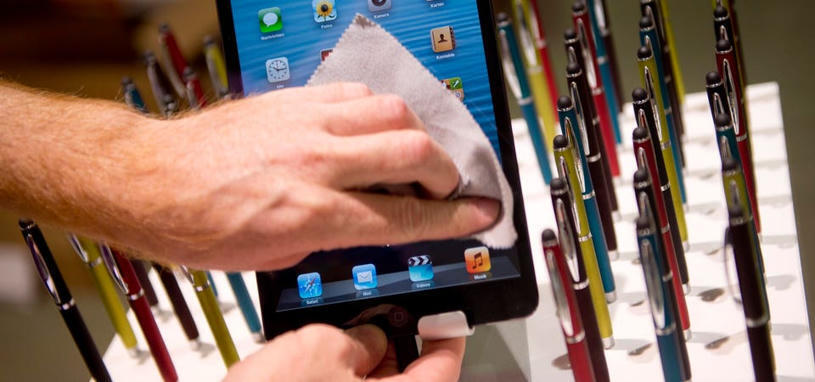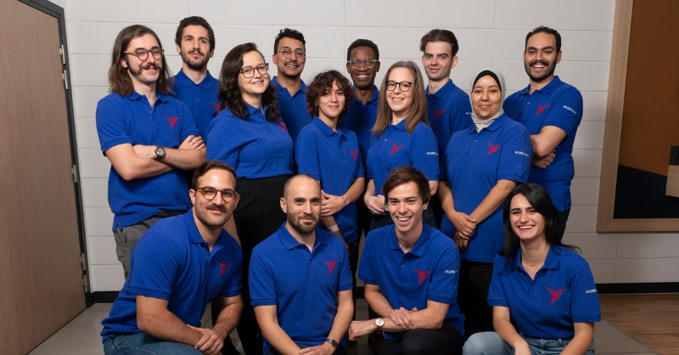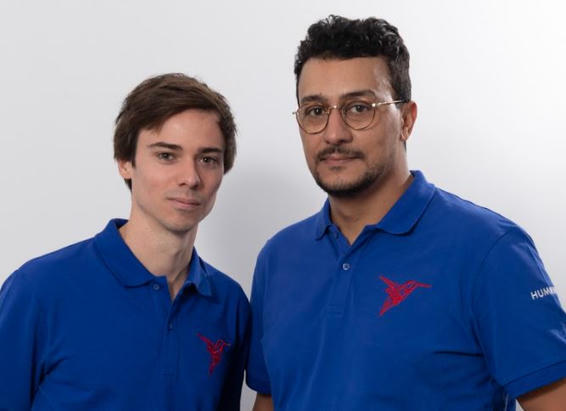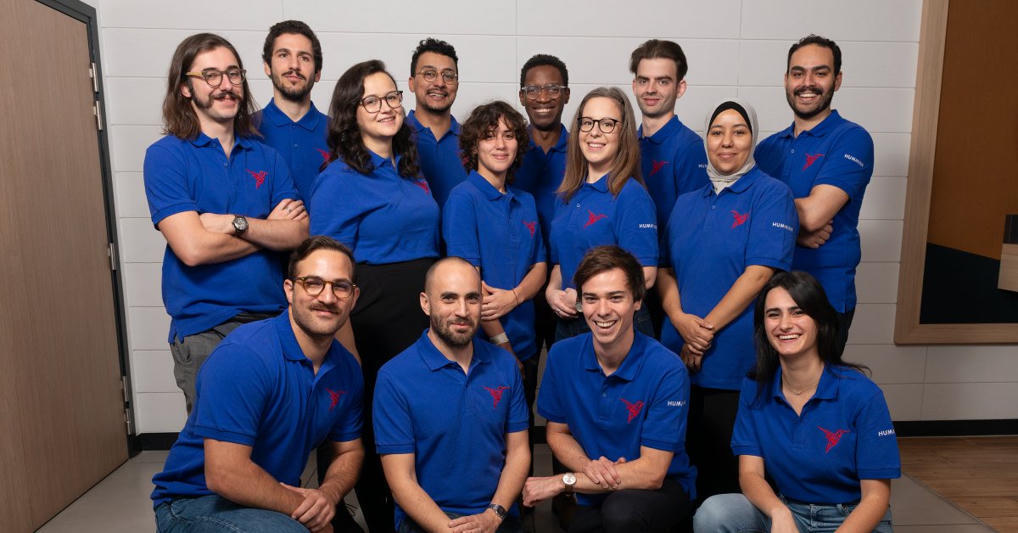
Hausse de 500% sur la RAM et les SSD : une flambée des prix des PC et smartphones dès décembre ?
www.servicesmobiles.fr
Dec. 6, 2025, 4:04 p.m.
Les prix des ordinateurs, ordinateurs portables et smartphones pourraient augmenter dès décembre, en raison d’une hausse spectaculaire du coût de la RAM et des SSD, qui aurait grimpé jusqu’à 500 % selon les dernières analyses du secteur.
Share on

Huawei Is Becoming Nvidia. Telco Is the Funding Round.
sebastianbarros.substack.com
Dec. 4, 2025, 7:02 p.m.
The global telecommunications sector is missing the most critical corporate mutation of the decade. Analysts still track Huawei by its radio share, contract wins and losses, friction with regulators, and handset cycles. The entire Western debate remains obsessed with the tower, the antenna, and the base station. Meanwhile, the center of gravity inside Huawei has moved to a very different place. The real action is in the data center, not the radio site.
Share on

Disruptive Innovation: 4 Brands That Disrupted Themselves
www.qualtrics.com
Nov. 30, 2025, 9:12 p.m.
The term ‘disruptive innovation’ is attributed to Harvard professor of business Clayton Christiansen, who helped develop the concept in the 1990s. It’s based on the idea that established companies tend to focus their development on the top end of their markets, leaving a gap for newcomers to rethink the basic principles those companies were founded on, quickly progress and eventually overtake the originators. The result is a new way of doing things that makes previously high-end experiences accessible to the mass market.
Share on

Boosting Wi-Fi Range of the ESP32-C3 SuperMini
www.elektormagazine.com
Nov. 28, 2025, 7:06 p.m.
The ESP32-C3 SuperMini modules are incredibly affordable, costing around €2, and are equipped with a compact SMD antenna. However, this tiny antenna significantly limits the usable Wi-Fi range, due to its design. To address this issue with minimal effort, I implemented a simple antenna modification that drastically improved performance.
Share on

Europe’s cookie nightmare is crumbling
www.theverge.com
Nov. 27, 2025, 5:38 a.m.
The European Commission is changing how cookie prompts work in Europe. You’ll soon be able to use browser preferences instead of per-site pop-ups.
Share on

Hummink raises €15M to bring micronic precision printing to advanced manufacturing
tech.eu
Nov. 24, 2025, 10:52 a.m.
While traditional lithography remains central to electronics manufacturing, it still produces defects that contribute to yield loss and material waste. Hummink’s printing tools are designed to complement lithography by detecting and correcting such defects at the micronic level, with the aim of increasing output, reducing scrap, and lowering environmental impact. Hummink’s initial integration focus is on next-generation OLED displays for smartphones and laptops, where up to 30 per cent of annual production is reportedly discarded due to microscopic defects, equating to an estimated €16 billion in losses and significant material waste. The company’s technology is designed to correct many of these defects, enabling manufacturers to recover output that would otherwise be scrapped.
Share on

Hummink raises $20 million to scale sub-micron precision printing for advanced manufacturing
roboticsandautomationnews.com
Nov. 24, 2025, 10:51 a.m.
The company is now under qualification with major display manufacturers in Asia whose factories discard large portions of production due to microscopic flaws. Early tests suggest Hummink’s solution could boost yields by around 10 percent.
Share on

HUMMINK : comment une technologie née au sein du CNRS et de l'ENS, est en train de s’imposer dans les fabs asiatiques
www.frenchweb.fr
Nov. 24, 2025, 10:50 a.m.
La société a développé un procédé de micro-impression, le High-Precision Capillary Printing (HPCaP), qui fonctionne comme un stylo-plume à l’échelle micronique. Le système dépose des métaux ou matériaux fonctionnels avec une précision sub-5 microns pour réparer des circuits, ajuster des connexions ou corriger les défauts invisibles qui entraînent la mise au rebut de composants entiers. Ce positionnement répond à un besoin immédiat : les technologies de lithographie, même les plus avancées, génèrent des imperfections qui ne peuvent être traitées qu’après fabrication.
Share on

Why the Mediterranean diet works
news.harvard.edu
Nov. 20, 2025, 12:12 p.m.
In podcast, experts break down universal appeal, research-backed benefits of a health trend that adds more than it takes awayDiet fads come and go. But at least according to research, it appears the Mediterranean diet is here to stay.
Share on

Meet The French Start-Up Helping Big Tech Manufacturers To Cut Waste
www.forbes.com
Nov. 18, 2025, 4:13 p.m.
Think of advanced manufacturing and you think of precision engineering – sophisticated production lines that spit out advanced components with total accuracy. However, some technologies are now so complex and technical that even highly-skilled manufacturers are struggling with high defect rates that slow production and cost them big money.
Share on

Hummink secures €15M to scale nanoprinting tech tackling chip and display defects
techfundingnews.com
Nov. 17, 2025, 7:19 p.m.
Capital will support development of Hummink’s industrial printing module and prepare its integration inside semiconductor and display factories. The team also plans to double its workforce by 2026, expand global presence across Asia and the U.S., and boost production of proprietary conductive inks used in ultra-fine electronic repairs.
Share on

Hummink Raises €15 Million to Bring Micronic Precision Printing to Advanced Manufacturing
www.citybiz.co
Nov. 17, 2025, 3:28 p.m.
Traditional lithography remains the workhorse of electronics production, but even the best processes generate flaws that lead to yield losses and material waste. In comparison, Hummink’s printing tools act as surgical instruments at the micronic level, complementing lithography by identifying and correcting those flaws. The result is higher output, lower scrap rates, and reduced environmental impact across the industry.
Share on

French DeepTech Hummink secures €15 million to bring surgical-level precision to microelectronics manufacturing
www.eu-startups.com
Nov. 17, 2025, 3:25 p.m.
As microelectronics underpin the rise of artificial intelligence and high-performance computing, the smallest manufacturing imperfections have become billion-euro problems. Each defect at the sub-micron scale can derail an entire batch of chips or displays.
Share on

Paris-based deeptech company Hummink secures €15M
siliconcanals.com
Nov. 17, 2025, 8:59 a.m.
HPCaP allows the printing of metals and functional materials at the sub-micron scale and supports real-time repair of defects during chip and display production. The company promotes the method as a way to address faults that can halt entire batches in microelectronics manufacturing.
Share on

Guinness dévoile le Guinnbrella, le parapluie conçu pour... votre bière
creapills.com
Nov. 17, 2025, 7:50 a.m.
Guinness détourne le parapluie pour créer le Guinnbrella, un objet absurde et brillant qui redonne goût au réel et à la convivialité.
Share on

Hommes et robots intelligents : quel avenir ?
hommesetsciences.fr
Nov. 16, 2025, 12:20 p.m.
Les robots sont partout, ces machines (petites ou grosses) sont utilisées dans l’industrie, dans l’exploration spatiale ou sous marine, dans la vie domestique avec des applications informatiques qui agissent pour nous ou qui interagissent avec nous lorsque nous nous servons de nos ordinateurs ou de nos smartphones.
Share on

Goodbye, Cavities? Scientists Just Found a Way to Regrow Tooth Enamel
scitechdaily.com
Nov. 10, 2025, 3:58 p.m.
Scientists at the University of Nottingham have developed a new protein-based gel that can restore tooth enamel by mimicking the body’s natural growth processes. A newly developed material has been used to create a gel capable of repairing and rebuilding tooth enamel, offering a potential breakth
Share on

Confocal Raman Imaging and Correlative Techniques in Life Science
www.oxinst.com
Nov. 9, 2025, 5:25 p.m.
Confocal Raman microscopy is a label-free and non-destructive technique that enables 2D and 3D measurements on biological samples both in vivo and in vitro. It can be seamlessly combined with other techniques for a comprehensive analysis of the samples. Such a combination allows for obtaining metabolic, structural, mechanical, topographical and other kind of information from cells, organoids, tissues, and other types of biological samples.
Share on

Résultats enquête CIR / CII
www.france-innovation.fr
Nov. 7, 2025, 12:12 p.m.
Les dispositifs Crédit Impôt Recherche (CIR) et Crédit Impôt Innovation (CII) font l’objet très régulièrement de critiques et de prises de position variées. Son coût pour la puissance publique n’y est pas étranger. France Innovation et l’ASRC ont souhaité lancer cette enquête afin de recueillir, dans un premier temps, l’avis de nos membres avec une approche quantitative.
Share on

Cette mystérieuse start-up américaine qui recrute des consultants pour les remplacer… grâce à l'IA
www.lesechos.fr
Nov. 5, 2025, 8:25 p.m.
Mercor aurait recruté près de 150 consultants afin de bâtir une intelligence artificielle capable de les assister au quotidien, selon Bloomberg. Le secteur s'interroge de plus en plus sur l'arrivée en force de cette nouvelle technologie.
Share on